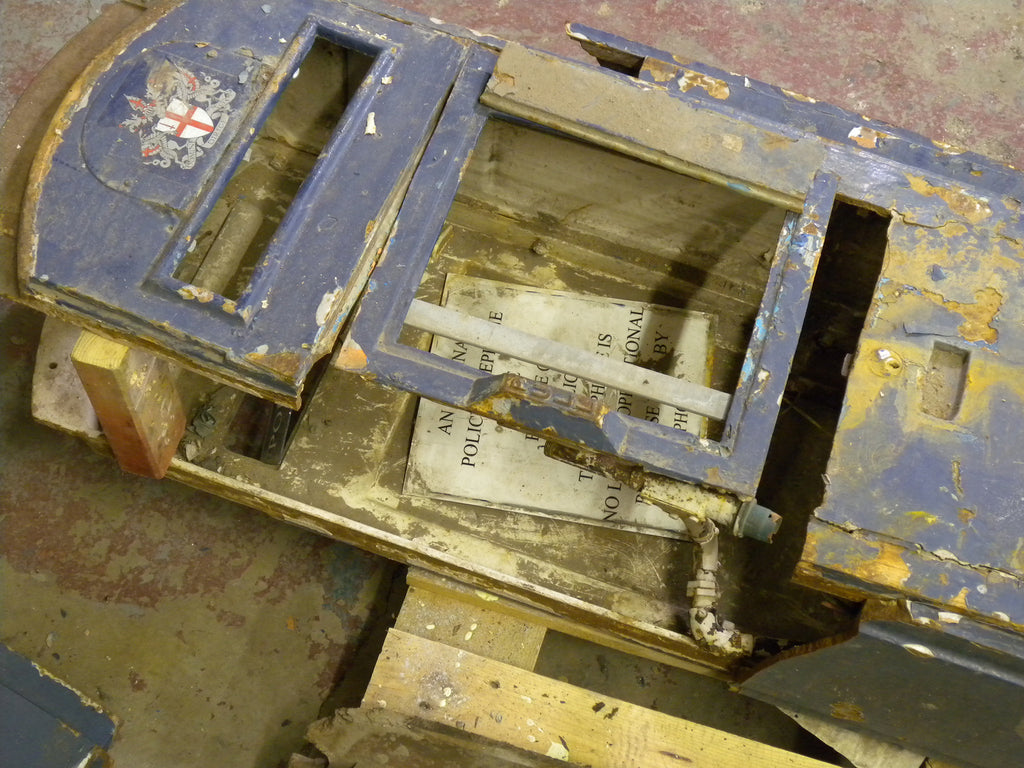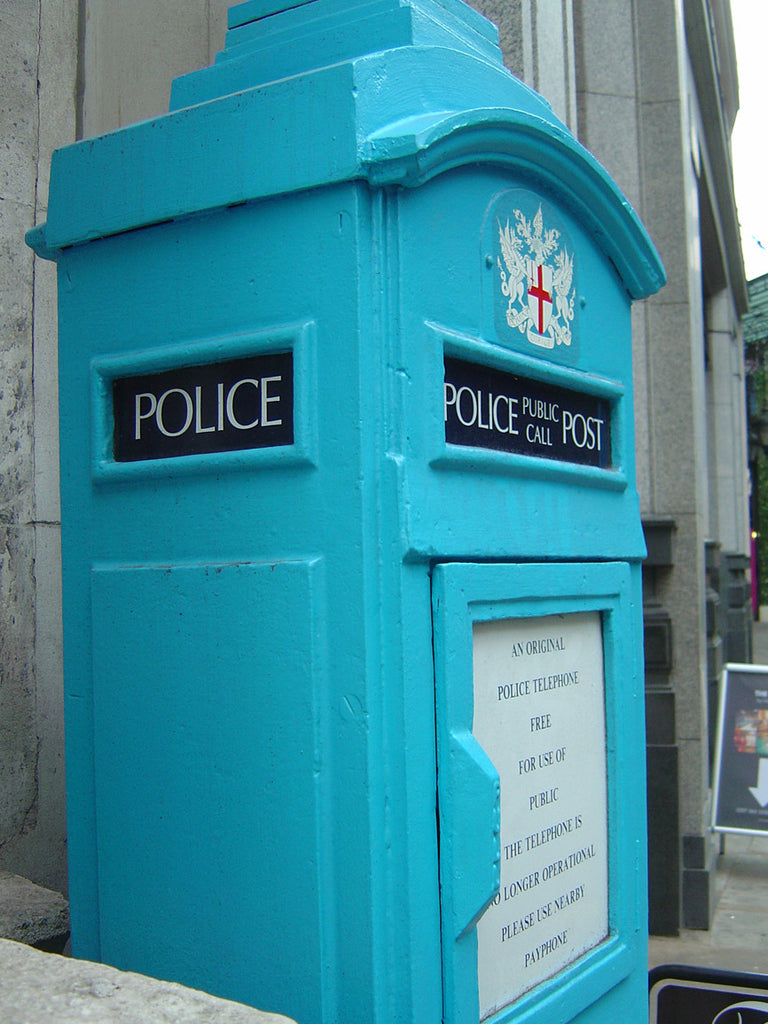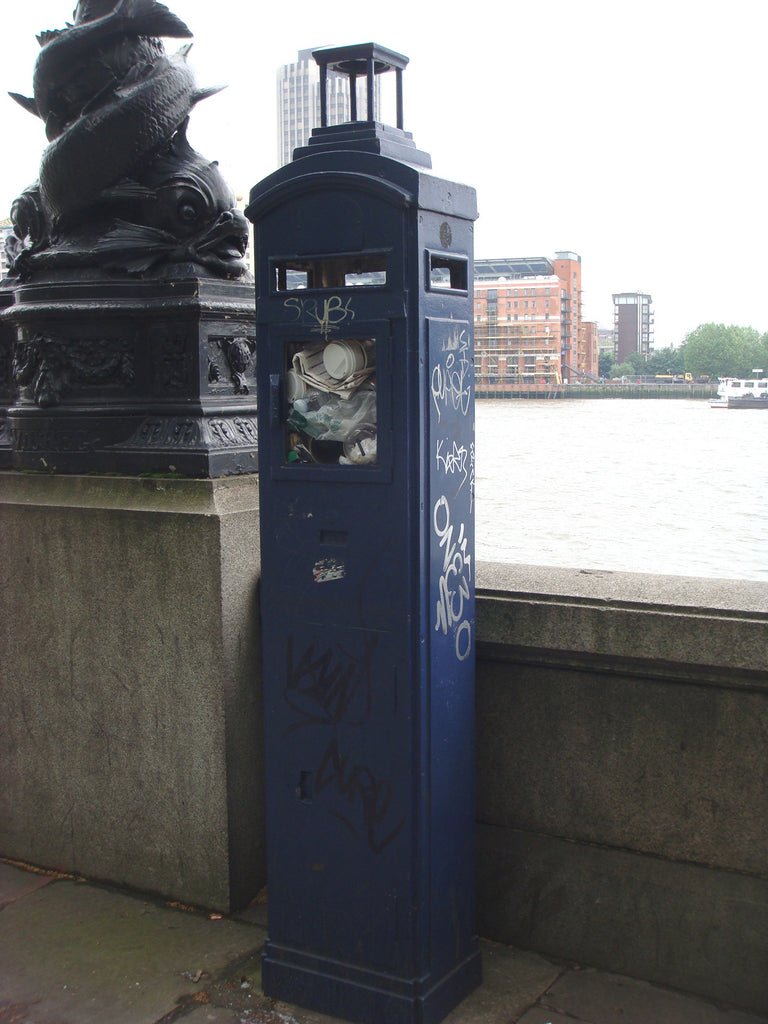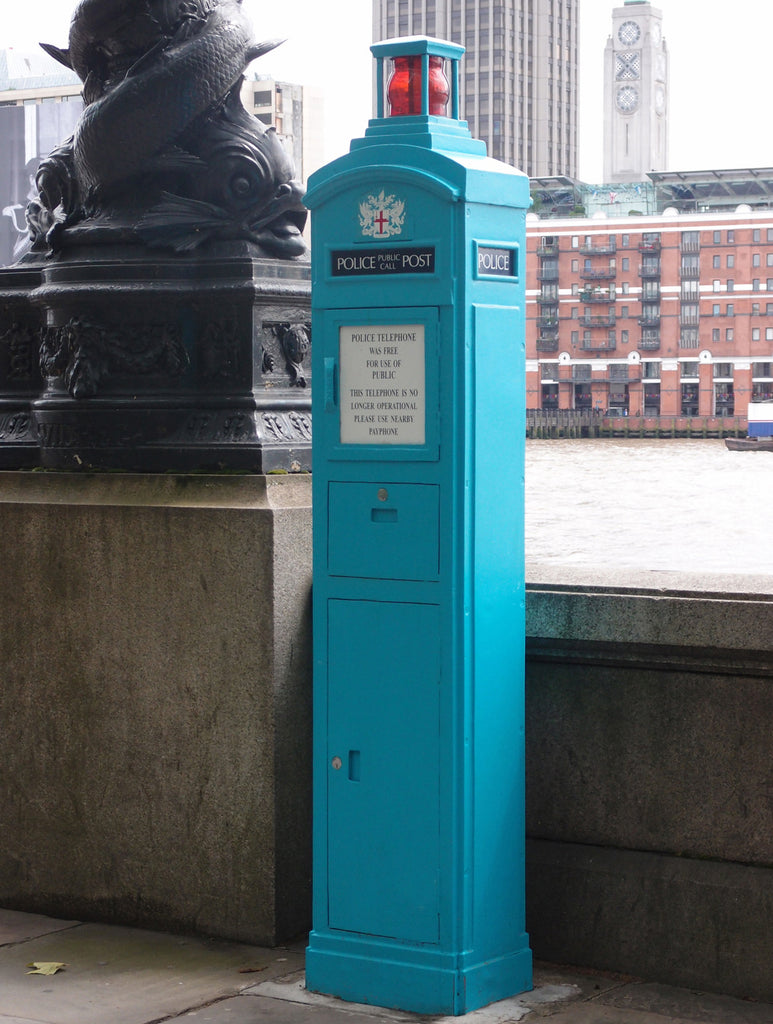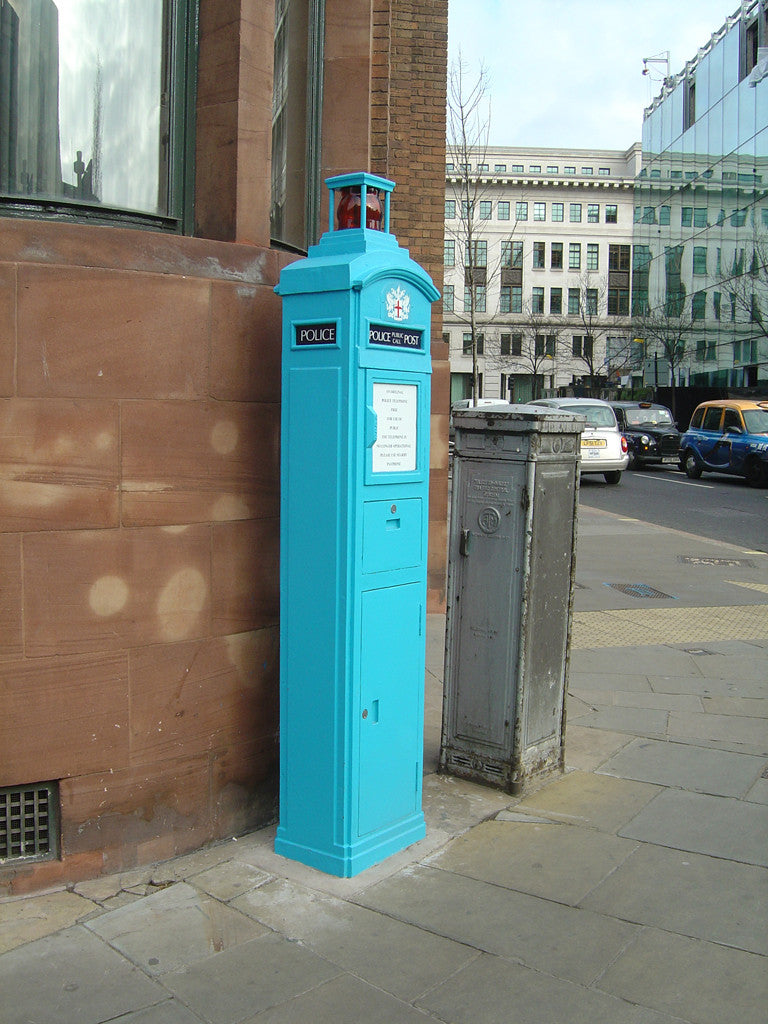RESTORATION OF EIGHT POLICE CALL POSTS
British Ericsson (early 1930s)
Client: The City of London Corporation
Location: Throughout the City of London
 These cast-iron Police Call Posts were manufactured in the early 1930's by British Ericsson and sited throughout the City of London. The posts enabled the public to call the Police station and were also used for the station to contact the Policeman on the beat in that area. The red signal light would flash if the Constable were required to contact the station. The upper hatch opened to give access to the telephone; the middle door opened horizontally to provide a writing surface and lower door opened to a storage cupboard containing first aid kit and other useful items.
These cast-iron Police Call Posts were manufactured in the early 1930's by British Ericsson and sited throughout the City of London. The posts enabled the public to call the Police station and were also used for the station to contact the Policeman on the beat in that area. The red signal light would flash if the Constable were required to contact the station. The upper hatch opened to give access to the telephone; the middle door opened horizontally to provide a writing surface and lower door opened to a storage cupboard containing first aid kit and other useful items.
All the posts were decommissioned in the 1960's, when radio communication took over, and the majority of their contents were removed at that time.
A number of these posts were sold in the 1980’s, however these eight remain in the City and are now Grade II Listed. They can be seen at the following locations:
- Victoria Embankment, south side, close to the City boundary dragons
- Aldgate, outside St Botolph’s Church
- Liverpool Street, east side
- Friday Street, at the corner of Queen Victoria Street
- Walbrook, close to the Mansion House
- Guildhall Yard, off Gresham Street
- St Martin's le Grand, by the entrance to Postman's Park
- Old Broad Street, by Adam's Court
 Prior to restoration, the condition of the City’s collection was in varying condition. Three of the posts, Aldgate, St Martin’s le Grand and Walbrook, were in fairly good condition, however the remainder required full repair and replacement of missing parts.
Prior to restoration, the condition of the City’s collection was in varying condition. Three of the posts, Aldgate, St Martin’s le Grand and Walbrook, were in fairly good condition, however the remainder required full repair and replacement of missing parts.
The decision to remove cast-iron objects to the workshop for repair is one that requires careful judgement: as cast-iron is fragile, such objects should always be repaired in situ when possible to limit the risk of damage in transit. However, five of these posts could only be repaired off site, so having acquired consent, their temporary removal was carried out with great care.
 First of all, paint samples were taken for analysis. Anecdotal evidence indicated that the posts were originally painted in a bright, sky blue. Analysis showed that the posts had received a first coat of dark blue paint (in the factory) but that they had been repainted in the City’s own bright blue, followed by later coats of the dark blue again. It was concluded that all the posts should be repainted in the City’s bright blue that had been applied close to the date of manufacture.
First of all, paint samples were taken for analysis. Anecdotal evidence indicated that the posts were originally painted in a bright, sky blue. Analysis showed that the posts had received a first coat of dark blue paint (in the factory) but that they had been repainted in the City’s own bright blue, followed by later coats of the dark blue again. It was concluded that all the posts should be repainted in the City’s bright blue that had been applied close to the date of manufacture.
 The Liverpool Street Call Post had been particularly severely damaged by a vehicle collision. The fragments were painstakingly welded together and replacement cast-iron parts made only where absolutely necessary. All the posts were cleaned and repaired and their surfaces primed and filled where required to improve their surface quality.
The Liverpool Street Call Post had been particularly severely damaged by a vehicle collision. The fragments were painstakingly welded together and replacement cast-iron parts made only where absolutely necessary. All the posts were cleaned and repaired and their surfaces primed and filled where required to improve their surface quality.

Replacement enameled panels and new locks were also made, and on completion of the repairs the doors were thoroughly secured. City of London crests were then reapplied on the front.
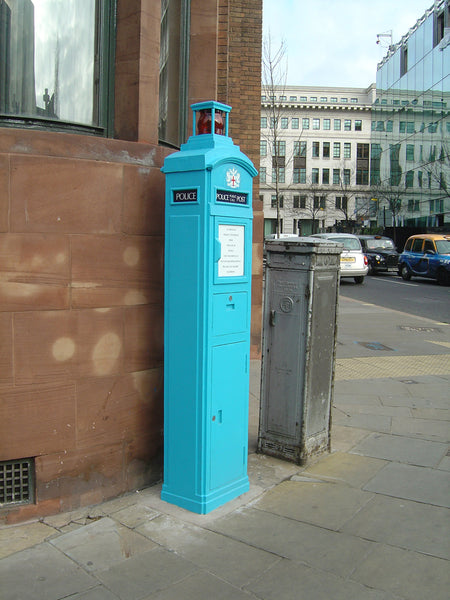
The remaining three posts that were already in reasonable condition were cleaned, conserved and repainted in situ. Having placed all eight posts into sound condition, they can now be regularly maintained.
Two more examples are held within the collections of the Wood Street Police Station Museum and the Museum of London, both of whom kindly assisted in our research for this project. Some of the City posts sold in the 1980s are now held in private collections. A few examples of similar posts exist in Westminster and throughout the country, but those differ slightly in design and colour. The Westminster models bear a Royal crest above the front ‘POLICE POST’ panel, and are painted dark blue.




